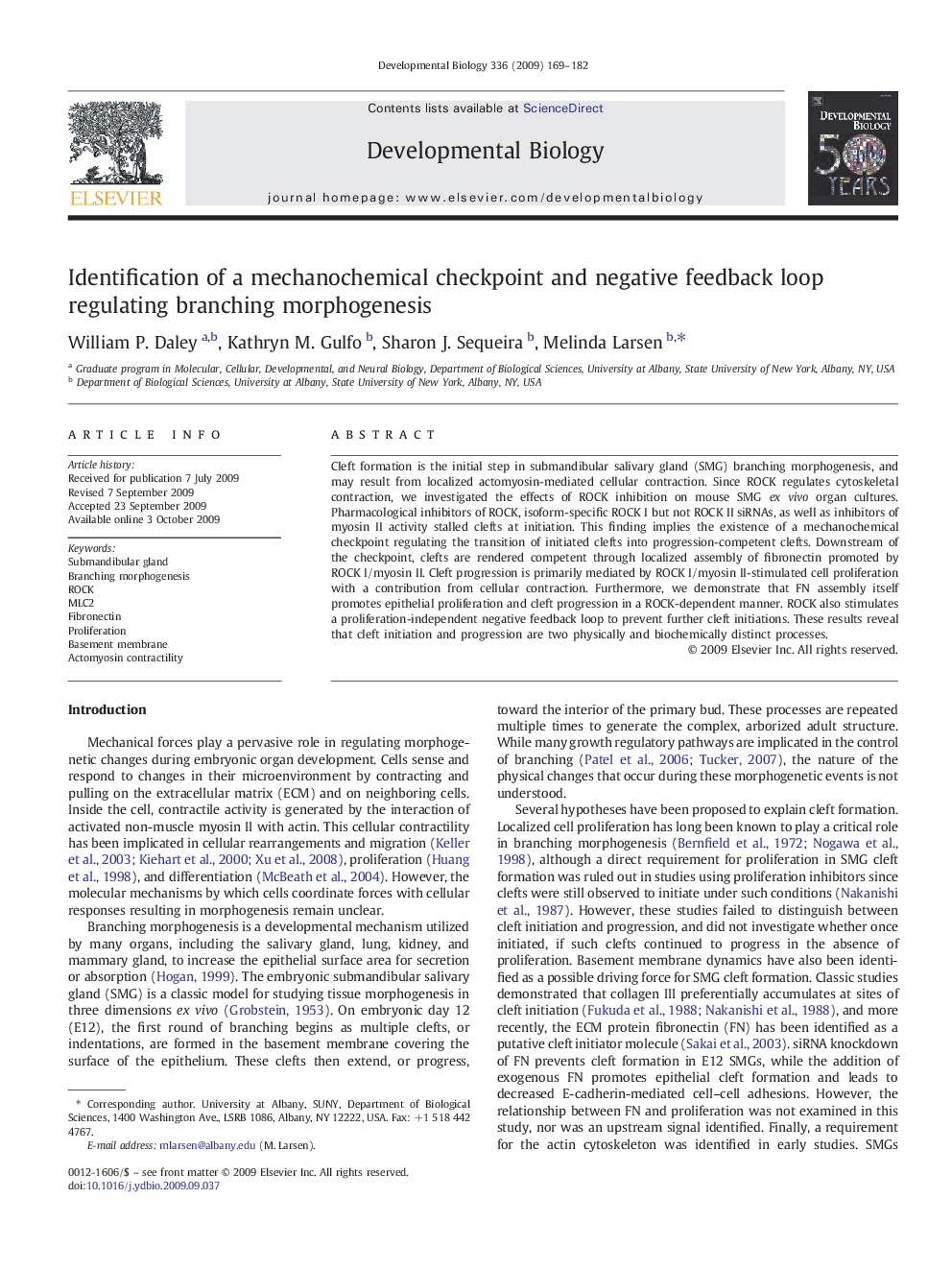| Article ID | Journal | Published Year | Pages | File Type |
|---|---|---|---|---|
| 10933208 | Developmental Biology | 2009 | 14 Pages |
Abstract
Cleft formation is the initial step in submandibular salivary gland (SMG) branching morphogenesis, and may result from localized actomyosin-mediated cellular contraction. Since ROCK regulates cytoskeletal contraction, we investigated the effects of ROCK inhibition on mouse SMG ex vivo organ cultures. Pharmacological inhibitors of ROCK, isoform-specific ROCK I but not ROCK II siRNAs, as well as inhibitors of myosin II activity stalled clefts at initiation. This finding implies the existence of a mechanochemical checkpoint regulating the transition of initiated clefts into progression-competent clefts. Downstream of the checkpoint, clefts are rendered competent through localized assembly of fibronectin promoted by ROCK I/myosin II. Cleft progression is primarily mediated by ROCK I/myosin II-stimulated cell proliferation with a contribution from cellular contraction. Furthermore, we demonstrate that FN assembly itself promotes epithelial proliferation and cleft progression in a ROCK-dependent manner. ROCK also stimulates a proliferation-independent negative feedback loop to prevent further cleft initiations. These results reveal that cleft initiation and progression are two physically and biochemically distinct processes.
Keywords
Related Topics
Life Sciences
Biochemistry, Genetics and Molecular Biology
Cell Biology
Authors
William P. Daley, Kathryn M. Gulfo, Sharon J. Sequeira, Melinda Larsen,
